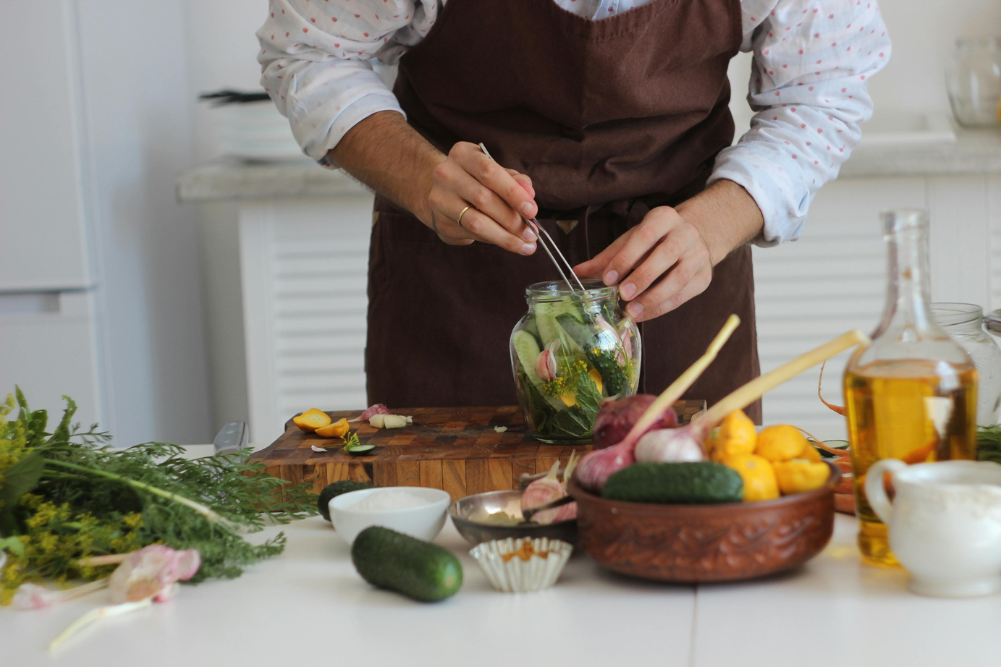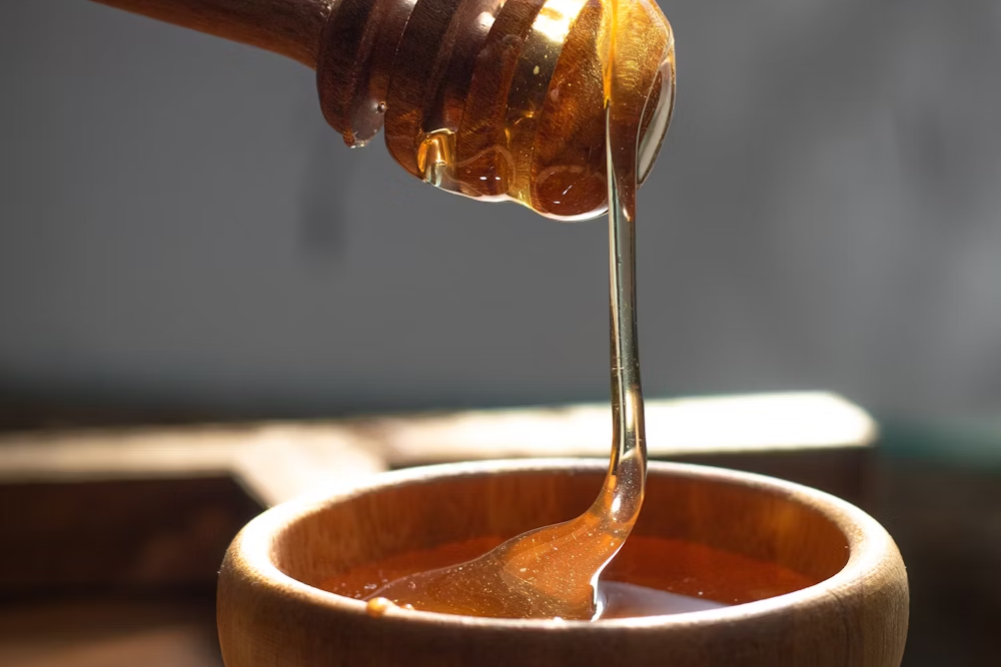How to Create a Thriving Microbiome
At the heart of our body’s health lies a community of microorganisms that shapes everything from digestion to immunity. The microbiome is a complex ecosystem of microorganisms, including bacteria, viruses and fungi, that live in various parts of our body, with most of them found in the gut. This thriving microbial community, outnumbering our human cells, form a dynamic and vital network that plays a crucial role in maintaining our overall health. Understanding and nurturing our gut microbiome is essential for good health and safeguarding against chronic disease.
In this article, we will explore the benefits of maintaining a balanced gut microbiome, the factors that can disrupt its balance and practical steps to promote and maintain a healthy microbiome through diet and lifestyle. By understanding the pivotal role of the gut microbiome in our health, we can take proactive steps to nurture this internal ecosystem and, in turn, support optimal health and wellbeing.
The role of our microbiome
Our gut microbiome is home to around 100 trillion bacteria, including beneficial and pathogenic strains, which are fundamental to good health, influencing everything from digestion and immune function to our mental wellbeing. Keeping this delicate balance is essential for overall health and vitality.
The gut microbiome helps break down fibre-rich complex carbohydrates that our bodies can’t digest on their own. This process produces essential nutrients and short-chain fatty acids that support gut health.
A significant portion of the immune system is located in the gut. A balanced gut microbiome helps to regulate and strengthen the immune system and prevent harmful pathogens from colonising the gut.
The gut microbiome also influences skin health by reducing inflammation and helping manage skin conditions such as eczema, acne and psoriasis.
The gut microbiome can help detoxify harmful substances, including certain drugs and environmental pollutants. They produce certain enzymes that help break down these toxins and chemicals, preventing their absorption and aiding in their execration, which prevents them from accumulating in the body.
A balanced microbiome can improve the body’s ability to regulate blood sugar levels and influence hunger and satiety hormones, which help regulate appetite and support healthy weight management. It also influences our tendency to store and burn fat, which can help reduce the risk of obesity.
Gut microbiota also have the important job of producing vitamin K2, which the body requires for bone health and blood clotting, and B12, which is needed for energy production, nervous system health and red blood cell formation.
The gut microbiome is often referred to as the “second brain” as it communicates with the brain through the gut-brain axis, influencing our mood and mental health. A majority of our neurotransmitters that regulate mood, sleep and anxiety, such as serotonin, dopamine and GABA, are produced in the gut. Research has shown that a healthy microbiome can help reduce the risk of mental health conditions such as depression and anxiety.
A balanced microbiome helps maintain the integrity of the gut lining, preventing harmful substances from leaking into the bloodstream, which can trigger inflammation and increase the risk of chronic disease and autoimmune conditions. Research has shown that an imbalanced or compromised gut microbiome can play a key role in the development of conditions such as type-2 diabetes, cardiovascular disease and atopic allergies, including eczema, asthma, hay fever and type-1 food allergies.
What affects our microbiome health
Dysbiosis refers to an imbalance or disruption in the normal composition of the gut microbiome. This imbalance can occur when harmful bacteria, fungi or other microbes outnumber beneficial ones, leading to a range of health issues.
Dysbiosis can cause various symptoms including bloating, excess wind, diarrhoea, constipation and food sensitivities. It can also lead to fatigue due to poor nutrient absorption and can contribute to mental health problems such as anxiety, depression and mood swings. In addition, dysbiosis can lead to candida overgrowth and urinary tract infections, skin conditions, such as acne, eczema and rosacea, and a weakened immune system, making individuals more susceptible to infections, allergies and inflammatory disorders.
The health of our microbiome is influenced by a variety of factors, including our diet, medications and lifestyle choices.
A diet rich in processed foods, refined sugars and unhealthy fats, particularly trans fats, can encourage the growth of harmful bacteria and reduce microbiome diversity in the gut. Without adequate fibre in the diet, beneficial gut bacteria cannot thrive, leading to an imbalance. For those with gluten sensitivity or coeliac disease, gluten can trigger inflammation and damage the gut lining, which impacts the microbiome.
While necessary for treating bacterial infections, antibiotics can disrupt the microbiome by killing both harmful and beneficial bacteria, leading to reduced diversity. Other medications, such as nonsteroidal anti- inflammatory drugs (NSAIDs), proton pump inhibitors (PPIs), the oral contraceptive pill and antacids, can also affect the balance of our gut bacteria.
Chronic stress can also negatively impact the gut microbiome. High cortisol levels can alter gut permeability, increase inflammation and disrupt the balance of the microbiome.
Insomnia and poor-quality sleep can lead to changes in the composition of the gut microbiota. The microbiome has its own circadian rhythm, and disturbances in sleep can lead to imbalances.
Exposure to environmental toxins, such as pesticides, heavy metals and chemicals found in household products, can harm the gut microbiome by killing beneficial bacteria and promoting harmful strains.
Smoking and excessive alcohol consumption can harm the gut lining, promote inflammation and negatively alter the composition of the microbiome.
Infections (bacterial, viral or fungal) and illnesses can disrupt the balance of the gut microbiome, leading to dysbiosis and potentially affecting overall health.
Overuse of sanitisers and a highly sterile environment can reduce exposure to beneficial microbes, potentially impacting the development of a healthy microbiome, especially in children.
How to maintain a healthy microbiome
Eating a diverse and balanced diet rich in wholesome, unprocessed foods is key to supporting a healthy gut microbiome. This includes probiotic-rich fermented foods and prebiotic fibre sources.
Probiotics
Probiotics are live beneficial bacteria that colonise the gut and contribute to a healthy gut microbiome. Probiotics enhance the population of beneficial bacteria and influence the composition and activity of the gut microbiome. When consumed in adequate amounts, probiotics can improve gut health, enhance immune function and mental health and alleviate digestive disorders.
Probiotics are commonly found in fermented foods such as yoghurt with live cultures, kefir, natto, kimchi, sauerkraut, unpasteurised organic miso, organic tempeh, kvass and kombucha.
Some delicious ways to include fermented foods into your daily diet include adding Greek yoghurt to Bircher or natural muesli, smoothies or salad dressings. For a dairy-free option, use coconut yoghurt as a topping for healthy pancakes, scones and desserts. Enjoy kefir on its own, over porridge or muesli, in smoothies or as a tangy salad dressing. Add a spoonful of sauerkraut to salads, sandwiches, wraps, tacos, scrambled eggs, curries and dahls. Miso is commonly used in miso soup but it can also be used to give extra flavour and health benefits to a variety of dishes including sauces, salad dressings, marinades and glazes for fish, chicken and meat. Try adding some miso to your next pesto, stir-fry or noodle dish. Tempeh is a nutritious plant-based meat alternative perfect for curries, grain bowls, salads, tacos, burgers and stir-fries.
Probiotic dietary supplements are another great way to support the health of your gut microbiome. A daily dose of 10–20 billion CFUs is typically recommended for adults to support immune and digestive health. Higher doses of 50+ billion CFUs may be beneficial for those with a compromised gut microbiome due to illness or antibiotic use. Look for a high-quality product labelled with “live and active cultures”.
Prebiotics
Prebiotics are a type of dietary fibre that nourishes beneficial bacteria, supporting a balanced and healthy gut microbiome. To promote the growth and activity of these bacteria, it is essential to consume prebiotic-rich foods. Prebiotics are non-digestible fibres that serve as food for beneficial bacteria in the gut, helping them to thrive and maintain gut health.
Soluble fibre and resistant starch are the main types of prebiotic fibre. These fibres are fermented by gut microbiome producing a by-product of short-chain fatty acids (SCFA) such as butyrate and acetate. These SCFAs play an important role in promoting gut health as they encourage the growth of probiotics, reduce inflammation, maintain the integrity of the gut lining and support immune function.
Soluble fibre is found in high amounts in certain grains (whole oats, brown rice, bran), seeds (flaxseeds, chia seeds), legumes, nuts (pistachios, almonds, cashews), fruit (green bananas, apples, kiwi fruit, grapefruit, blueberries), vegetables (Jerusalem artichokes, savoy cabbage, dandelion greens, garlic, onions, leeks, asparagus), cacao, chicory root and seaweed. Cooked and cooled potatoes, oats, rice and pasta contain resistant starch. You can use cooked and cooled potatoes, rice or pasta in salads.
Some tasty ways to incorporate more prebiotic- rich foods into your daily diet include adding legumesto curries, nachos, salads, hummus, falafels, vegiepatties and dahls. Legumes and legume flours can also be used in grain-free sweet treats such as cakes, brownies and cookies. Try chickpea cookies or kidney bean brownies. Oats are incredibly versatile and can be used in healthy cakes, fruit crumbles, muesli bars and cookies. Make homemade granola, porridge or Bircher muesli and add a spoonful to smoothies. Oat flour makes a healthy alternative to wheat flour in baked goods. Try adding green bananas to smoothies, slice them into chips and bake them for a healthy snack, or use them in curries and stews. Green banana flour makes a nutritious gluten-free alternative to wheat flour for baking breads, muffins, and pancakes or as a sauce thickener.
Mexican Kidney Beans with Brown Rice
Serves: 1
1 red onion, finely chopped
2-3 cloves garlic, finely chopped
1 red or green capsicum, thinly sliced
1 heaped tsp dried oregano
1 heaped tsp ground cumin
1 heaped tsp smoked paprika
1 heaped tsp ground coriander
Good pinch sea salt
2 x 400g tins diced tomato
2 x 400g tins kidney beans, drained & rinsed
Handful fresh coriander, roughly chopped
To Serve
Guacamole
Cooked brown rice
Grated cheese or sour cream
Grilled corn
Lime wedges
Method
Preheat oven to 180°C and line a baking tray with baking paper.
In a large saucepan with olive oil over medium heat, sauté onion, garlic and capsicum for 3 mins.
Stir through oregano, cumin, paprika, coriander, sea salt and sauté for 1 min.
Add tomatoes and kidney beans and bring to the boil, then simmer, covered, for 10 mins.
Top with coriander to serve.
Serve with guacamole, brown rice, grated cheese or sour cream, grilled corn and lime wedges
Vegan Chocolate Chia Pudding
Serves: 2
Chia Pudding
¼ cup chia seeds
¼ cup water
½ cup coconut milk
¼ cup coconut yoghurt
1 tbsp pure maple syrup
½ tsp vanilla extract
Chocolate Pudding
1 large ripe avocado
2 heap tbsp raw cacao powder
3 tbsp coconut milk
2 tbsp pure maple syrup
½ tsp vanilla extract
Topping
Mixed Berries
Method
Place chia seeds in a small bowl and mix with ¼ cup of water. Let sit until a gel-like consistency forms.
Stir through coconut milk, yoghurt, maple syrup and vanilla extract. Cover and place in the fridge overnight or for 4 hours.
Place all chocolate pudding ingredients into a food processor and blend until you have a smooth, creamy consistency.
Spoon chocolate pudding into 2 serving glasses.
Top with chia pudding and then top with mixed berries.
Overnight Oats with Kiwi
Serves: 2
½ cup rolled oats
1 tbsp hemp seeds
1 tsp chia seeds
1 tbsp pepitas
⅓ cup almond milk
3 tbsp Greek yoghurt
2 tsp pure maple syrup (optional)
½ tsp vanilla bean extract or paste
Toppings
Sliced kiwi fruit
Flaked almonds
Method
Add oats, hemp, chia, pepitas, almond milk, Greek yoghurt, maple syrup and vanilla to a jar or container and stir well.
Place in the fridge with the lid on overnight.
Enjoy topped with kiwi fruit and flaked almonds.








